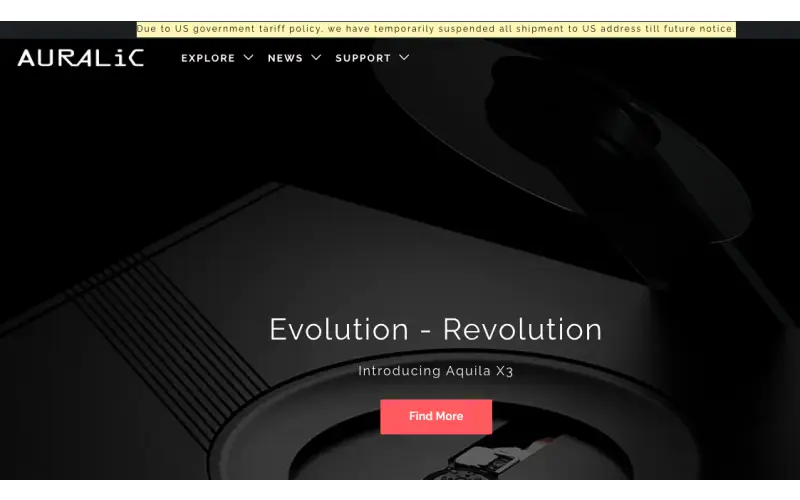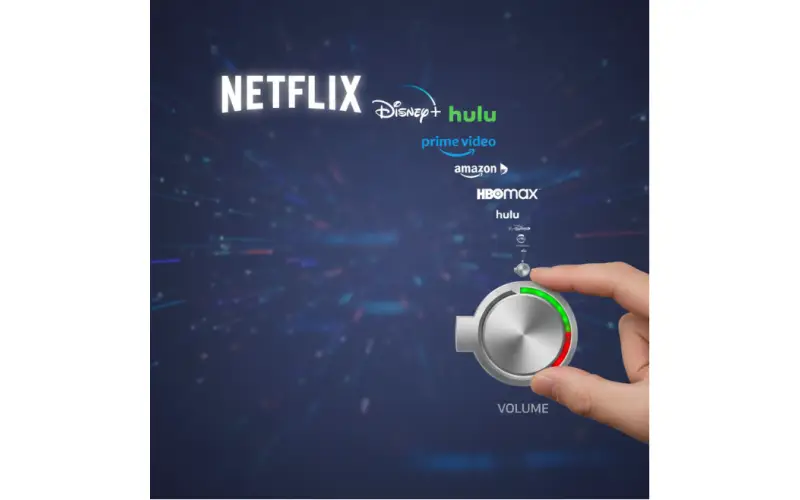By: Dipin Sehdev
The high-end audio world has been hit with another major shakeup. AURALiC, the boutique brand best known for its streaming devices and DACs, has officially ceased trading effective immediately. The news, first broken by StereoNET, confirms months of speculation about the company’s future following a series of troubling signs that pointed toward instability.
This closure doesn’t just mark the end of a respected audiophile brand—it also highlights how tariffs, trade policies, and intensifying competition are reshaping the audio industry in real time. As tariff pressures mount, many fear that AURALiC may not be the last name to bow out.
Signs of Trouble
Concerns about AURALiC’s long-term outlook began earlier this year, but they reached a boiling point in mid-September 2025. Without warning, the company’s community forum went offline. For years, this online space had been a vital hub where CEO and founder Xuanqian Wang personally engaged with customers, fielded technical questions, and shared product insights. Its sudden disappearance fueled rumors that something deeper was amiss.
Wang himself had already stepped down at the beginning of 2025. Since founding AURALiC in 2009, he had been more than just a CEO—he was the public face of the company, embodying the kind of hands-on, customer-first approach that helped build loyalty among audiophiles. His departure, reportedly to pursue “other ventures and race sports cars,” left a vacuum at the worst possible time.
The Tariff Fallout
Earlier this year, AURALiC halted all shipments to the United States, citing U.S. government tariff policy as the reason. Given the U.S. is a key market for premium audio equipment, this decision effectively cut the company off from a massive portion of its customer base. Dealers and distributors across the country reported difficulties securing new stock, with some saying they had gone months without fresh shipments.
According to reports obtained by StereoNET, AURALiC’s sales plummeted by 80% in 2025 alone. The combination of tariffs, rising competition from lower-cost streamers, and slowing global economic conditions proved too much to absorb. The company’s once-promising growth curve collapsed, and distributors were left scrambling to explain shortages to customers.
This situation underscores a broader issue: tariffs and trade restrictions are squeezing specialized audio companies more than mass-market brands. While larger corporations have the scale to weather supply chain disruptions, smaller outfits like AURALiC face razor-thin margins that can disappear overnight.
No Official Statement, but the End Is Clear
AURALiC has not released a formal announcement regarding its shutdown. However, sources close to the matter confirmed to StereoNET that the company informed partners it would cease operations effective immediately. The reasons given: collapsing sales performance, tariff-driven barriers, and a market that’s becoming increasingly hostile for boutique manufacturers.
Some reports even suggest that AURALiC’s intellectual property is up for sale, with an asking price of around US$2 million. If true, this could represent a last-ditch opportunity for another audio brand—or perhaps even a tech giant looking to break into hi-fi streaming—to acquire AURALiC’s designs, software, and patents.
What Happens to Warranty and Support?
One of the most pressing questions left unanswered is the fate of existing customers. With AURALiC shutting down operations, it’s not clear how—or if—warranty claims, repairs, and customer support will be handled going forward.
This uncertainty is troubling for owners of premium devices such as the Aries streaming transports or Vega DACs, which often cost thousands of dollars. Traditionally, AURALiC’s direct engagement with its customers provided reassurance that issues would be addressed promptly. Without that infrastructure in place, customers may find themselves with limited recourse should something go wrong.
Distributors have indicated they’re awaiting word from the company about what, if any, provisions will be made for ongoing support. As one dealer put it, “We are yet to receive full details from AURALiC of what the future holds in terms of service and support.” Until more clarity emerges, customers are left in limbo.
For the audiophile community, this raises a larger concern: if more small and mid-size audio brands fall victim to tariffs and trade wars, how can buyers feel confident investing in high-end gear with uncertain long-term backing?
Industry Reactions
The reaction from industry insiders has been one of sadness but not necessarily surprise. AURALiC had carved out a reputation as a forward-looking company with innovative designs and high-performance products. Its streaming solutions were often praised for combining cutting-edge features with audiophile sound quality.
But boutique brands live and die by their ability to differentiate, and the pressure from both established players and newcomers is relentless. Companies like Cambridge Audio, Bluesound, and even tech giants like Apple and Sonos have blurred the lines between mass-market and high-end audio streaming. Combined with tariff-driven restrictions, AURALiC simply couldn’t sustain itself.
As one longtime distributor told StereoNET, “It’s a sad day when our industry loses another brand. AURALiC had been on the rise in terms of popularity and product evolution for many years.”
A Reflection of Broader Industry Challenges
The AURALiC story is not just about one company—it’s a case study in how tariffs, global trade tensions, and competitive pressures are reshaping the audio landscape.
-
Tariffs: Tariff policies are disproportionately harming small audio companies that rely on international distribution. Without the ability to absorb costs or restructure supply chains quickly, they’re left vulnerable.
-
Competition: Cheaper streaming solutions from mainstream companies are eroding the high-end niche. Customers are increasingly expecting better performance at lower prices.
-
Global economy: With inflation and economic uncertainty, fewer consumers are willing to spend several thousand dollars on audio components, tightening demand further.
We may see more companies like AURALiC struggle—or even fold—if these conditions continue.
What Comes Next?
The best possible outcome for AURALiC at this stage might be the acquisition of its IP by another brand. This could ensure that its technology—respected and admired in the audiophile community—lives on in some form. Whether that buyer comes from within the audio industry or outside remains to be seen.
For now, audiophiles and industry watchers will need to stay tuned. Will AURALiC’s designs find a second life in another company’s portfolio? Will existing customers be left stranded without support? And more importantly, is this the beginning of a troubling trend for the boutique high-end audio world?
One thing is certain: StereoNET’s scoop has pulled the curtain back on a difficult truth. AURALiC’s demise may be the first of several dominos to fall as tariffs and market pressures continue to reshape the industry.
Final Thoughts
The closure of AURALiC is a sobering reminder that even brands with strong reputations and innovative products are not immune to global pressures. For home audio enthusiasts, it’s a loss of choice, diversity, and a company that genuinely pushed the boundaries of digital streaming.
For the industry, it’s a wake-up call. Tariffs and trade wars are not abstract policy debates—they have real consequences that can shutter beloved brands and disrupt the lives of customers who invested in them.
As the dust settles, AURALiC’s story leaves us with more questions than answers. Will warranties be honored? Will its technology be acquired? And how many more boutique brands may find themselves facing the same fate in the coming years?
Until we know more, one thing is clear: the high-end audio industry is entering an era of profound uncertainty.





